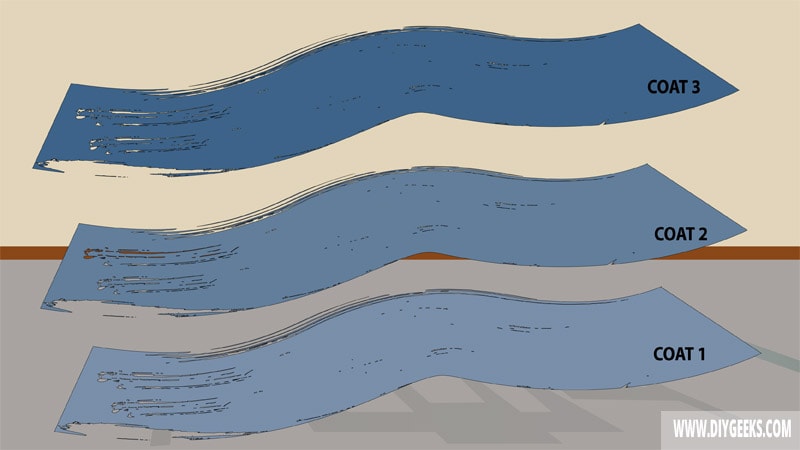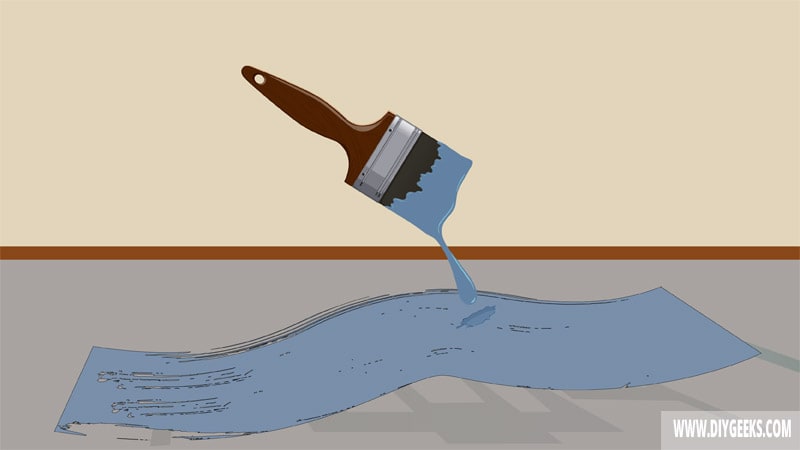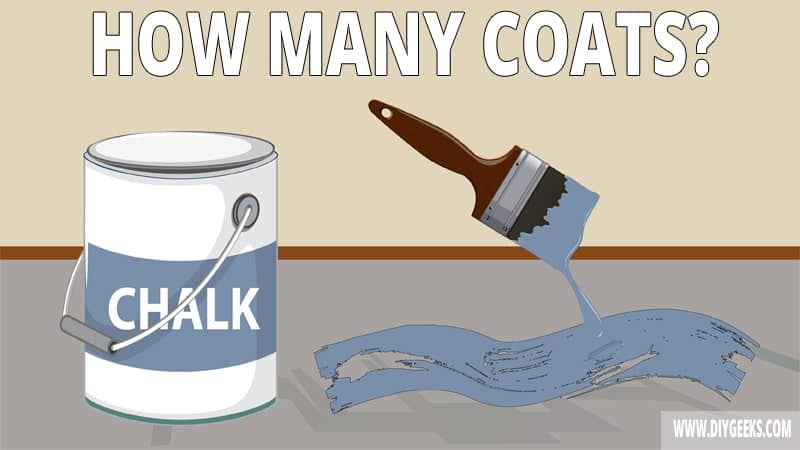You need between 2-3 chalk paint covers over interior surfaces and 3-4 chalk paint coats over exterior surfaces. The exact number of coats is determined by the surface type and whether the surface is indoors or outdoors.
The number of chalk paint coats matters as it determines the finish durability, coverage, color shade, and dry time. The more coats you apply the deeper the color shade gets, and the longer the paint takes to dry.
How Many Chalk Paint Coats For Different Surfaces?
The number of chalk paint coats for different surfaces is listed below.
Wood Cabinets
You need two (2) chalk paint coats of cabinet surfaces for proper coverage and protection. Wood cabinets aren’t exposed to constant water and don’t need much protection.
You must seal the chalk paint with water-based polyurethane if the cabinets are exposed to constant water or handling.
Wood Furniture
You need three (3) chalk paint coats for wood furniture. Wood furniture is exposed to constant handling, so it needs more protection.
However, you need two (2) chalk paint coats on wood furniture if you want a distressed finish. To get a distressed finish, you must sand the paint. Since you will be sanding, you don’t need too many coats.
Dark Wood
You need three or four (3-4) thin chalk paint coats on dark wood. You need more coats over a dark wood surface to cover and prevent the dark color from bleeding through the finish.
To reduce the number of chalk paint coats, use a dark color shade paint or apply two (2) primer coats.
Countertops
You need two or three (2-3) chalk paint coats on countertops surfaces. You must seal the chalk paint with a water-resistant sealer on countertops as these surfaces are exposed to constant water and need more protection.
Why Does The Chalk Paint Coat Number Matter?

Chalk paint coat number matters as it determines the paint finish durability, coverage, color shade, and dry time. You need two or three (2-3) chalk paint coats for proper durability, coverage, and color shade.
The finish will have poor durability and coverage, and the color shade will be lighter if you don’t apply enough chalk paint coats.
While chalk paint isn’t durable regardless, applying fewer coats will provide a weaker finish that peels off from minimal contact. Fewer chalk paint coats won’t cover a surface properly and will expose the surface to different elements, such as moisture.
The finish will take longer to dry, may turn sticky, and will have a deeper color shade if you apply too many chalk paint coats.
Too many chalk paint coats will slow the evaporation rate, increase the dry time, and keep the coats wet for longer. If the paint coating remains wet for too long, dust and dirt will settle over it and cause bumps on the finish once it dries.
Too many chalk paint coats will create a finish with a deeper color shade as there will be more paint pigments on the surface.
How To Know If You Need Another Chalk Paint Coat?

To know if you need another chalk paint coat, inspect the finish or check the manufacturer’s instructions to know the recommended number of paint coatings.
You need another paint coat if the finish has a lighter color shade than needed or if the coating hasn’t properly covered a surface. Though chalk paint is thick, its pigments don’t set fully or cover the whole surface with one coating.
You don’t need another paint coating if the chalk paint has covered the surface properly, there are no bumps or holes in the surface, and the finish has a proper color shade.
The paint coat number also depends on the surface type. You need two (2) chalk paint coats for low-traffic indoor surfaces that aren’t exposed to water or handling. You need three (3) chalk paint coats for high-traffic surfaces exposed to water.
How Long Does Chalk Paint Take To Dry Between Coats?
Chalk paint takes around 30 minutes to dry between coats. However, the exact dry time depends on the room temperature, humidity levels, and number of coats.
For instance, paint will dry faster if the temperature is high and humidity levels are low as the paint solvent will evaporate faster.
For paint to dry, its solvent (water or oil) must evaporate and the coating must be rigid. Since chalk paint is water-based, it dries faster as its solvent (water) evaporates from the coating fast.
The finish will turn sticky, remain wet for several days, and may peel off if you re-coat chalk paint too soon.
If you re-coat the paint too soon, the solvent evaporation process of the existing coating will be reduced and the solvent will prevent the new coating from adhering or drying, creating a sticky finish.
Ensure to wait at least 30 minutes (or more) before applying the next chalk paint coating.


